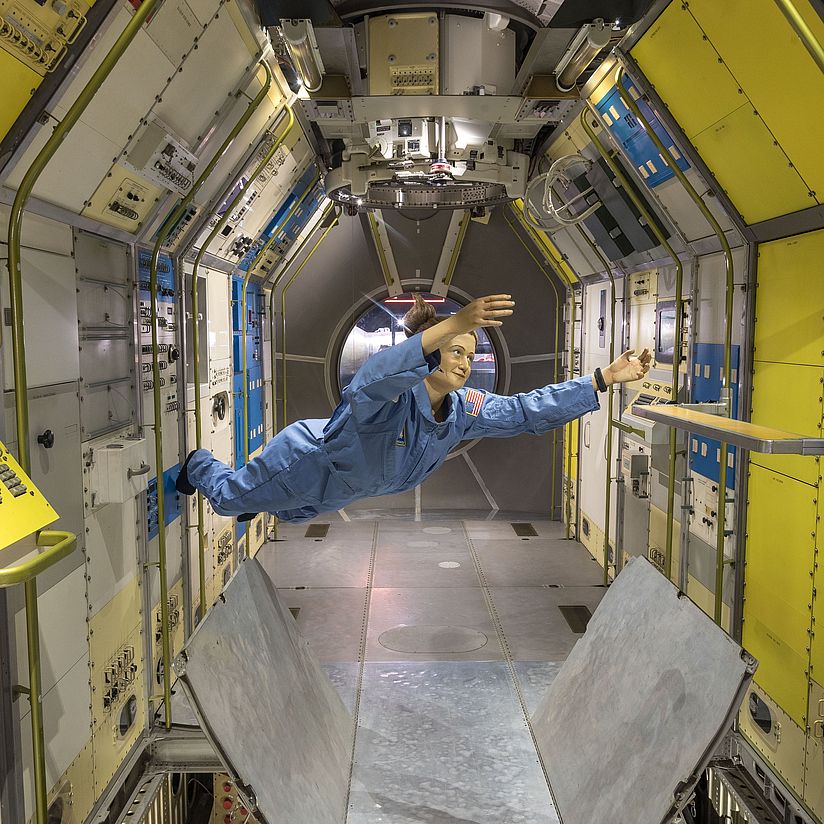
Photo: Deutsches Museum, München | Reinhard Krause Deutsches Museum
Astronautics
A journey into space
Completely detached from the earth: space travel, i.e. the transport of machines and people into space, is a young technical discipline. Fascination with the universe has existed since time immemorial, but we have only had the necessary knowledge, means and skills to overcome the limits of our planet for a few decades. Meanwhile, thousands of satellites orbit the Earth; humans have been to the moon; they occupy a permanent outpost in a space station; and there are much more far-reaching plans for future journeys into the infinite reaches. This exhibition traces the evolution of space travel from early ideas and innovations to its current importance as a central cornerstone in modern everyday life and for insights into life on Earth ... or perhaps elsewhere.
Countdown, launch, space flight, landing: The tour of the Astronautics exhibition works like a journey into space. After an overview of our solar system, it begins with the beginnings of rocket technology, continues with the development of rocket engines, leads to manned space flight including a space laboratory, and then on to satellites and probes before ending with remote sensing. Numerous exhibits and models ranging from rocket sleds to Helios probes, media stations and interactive demonstrations ensure a “universal” travel experience.
“Most of us are denied our own view of the Earth from space. But the eyes and sensors of numerous satellites allow visitors to the space exhibition to experience the fascination of looking down on our blue planet from above,” says Matthias Knopp, who conceived the exhibition during his time as curator at the Deutsches Museum.
Facts and figures:
Location: Level 2
Exhibition area: 1125 sqm
Exhibits and models: approx. 290
Demonstrations and interactives: 5
Media stations: 19
Dioramas: 3
Highlight: Rocket sled and car by Max Valier
Max Valier (1895 - 1930) was among the first pioneers to test rocket engines using liquid propellants. In order to make rocket technology known to the public, he tried to demonstrate rocket engines using the means of transport common at the time. The Rak 7 rocket car also served this purpose. Valier used the rocket sled to carry out spectacular test drives on the frozen Lake Starnberg. The two vehicles from 1930 are among the oldest exhibits in the exhibition.
Download the Press Release
PM_Astronautics.pdf (PDF 54 MB)
